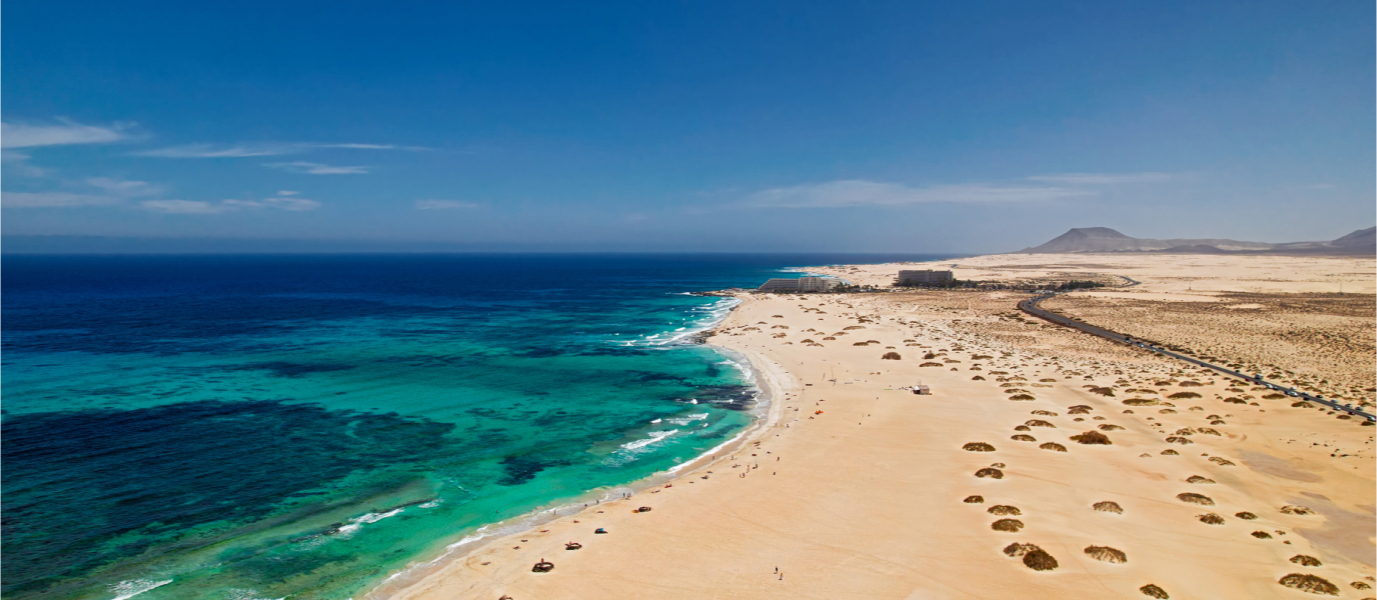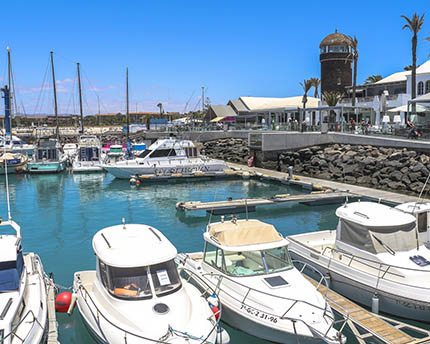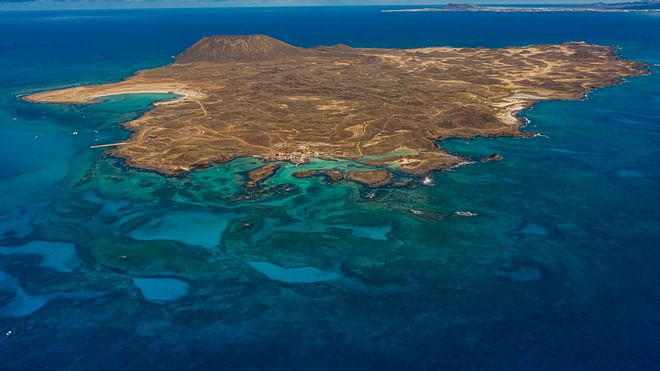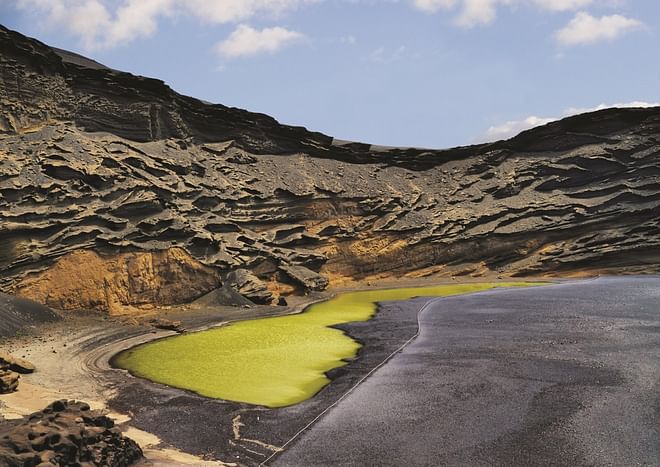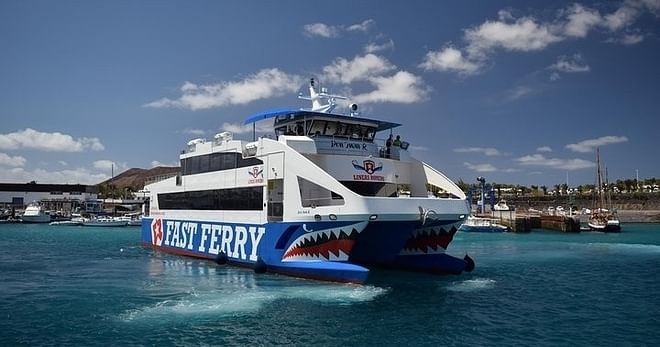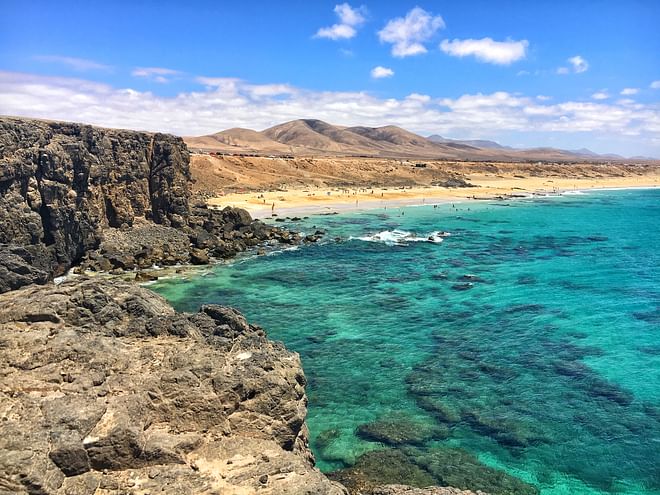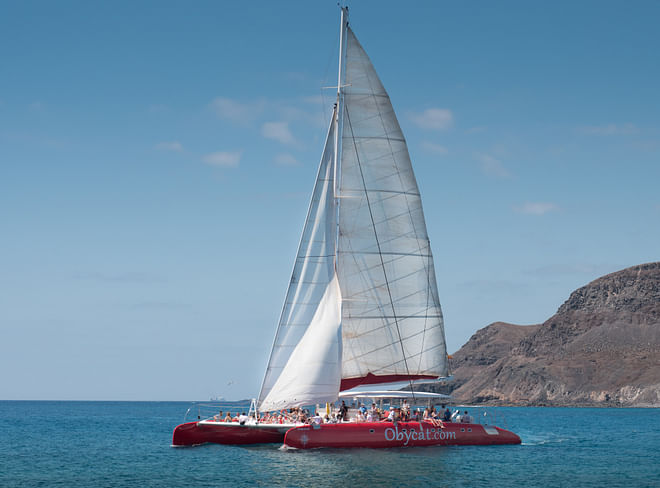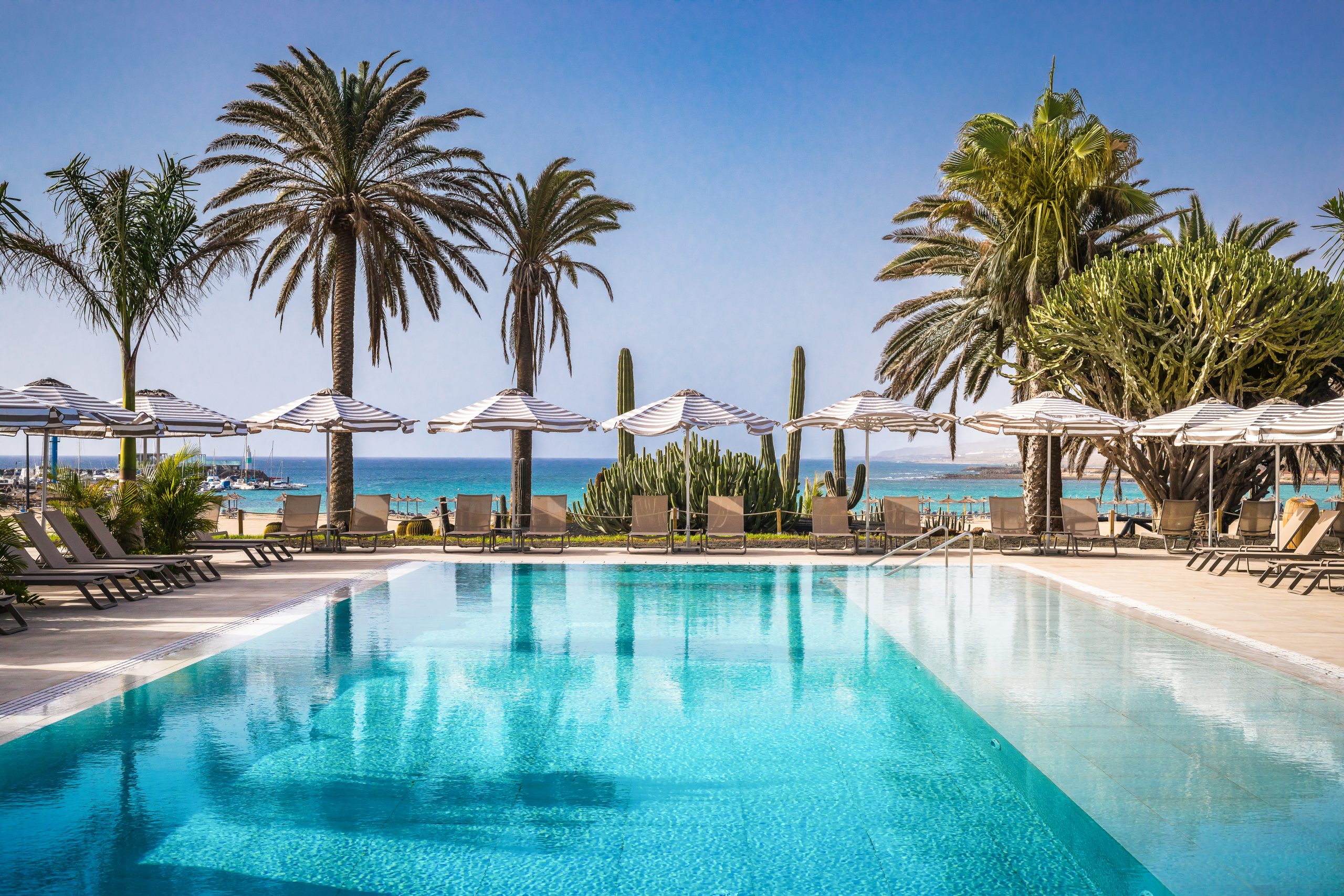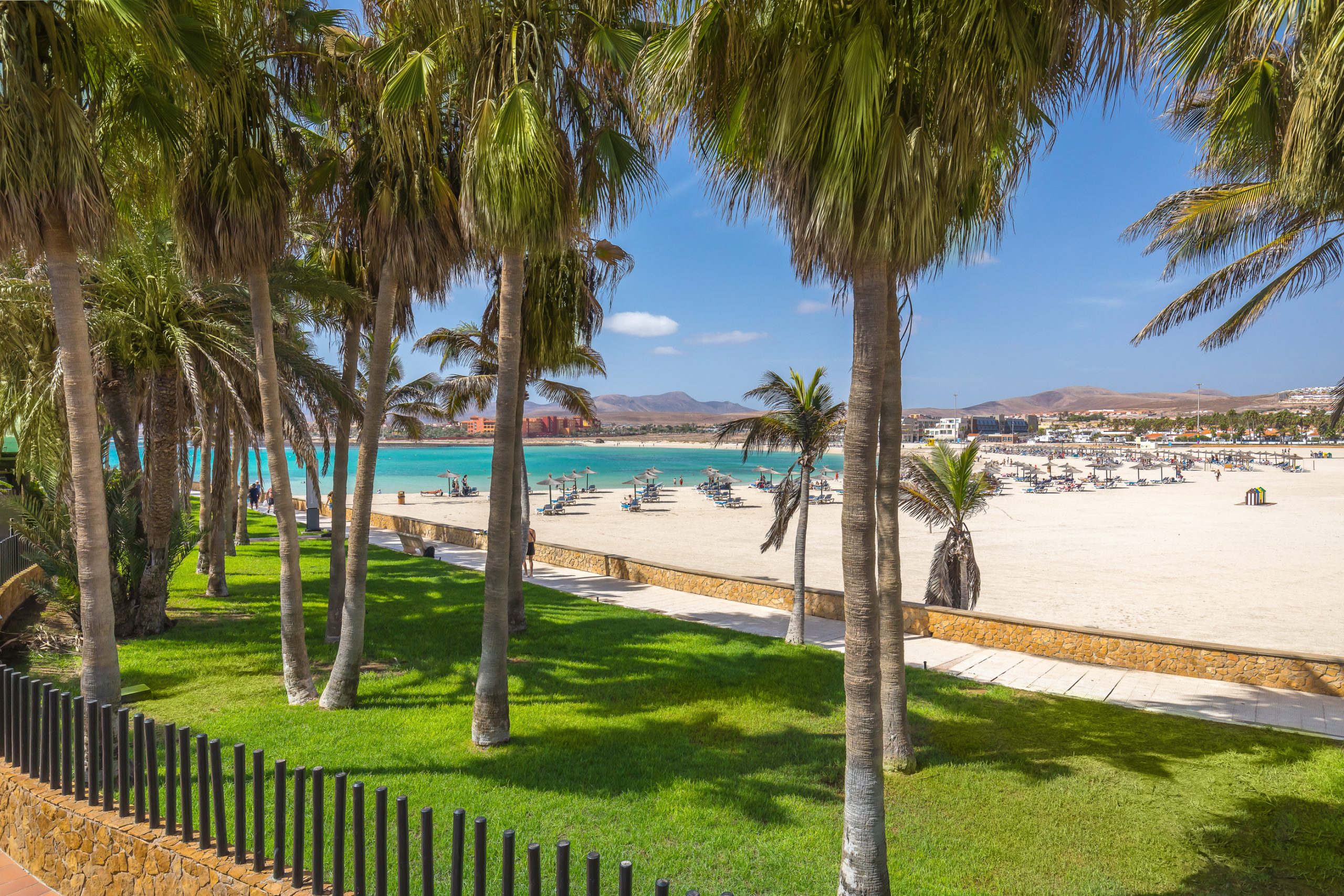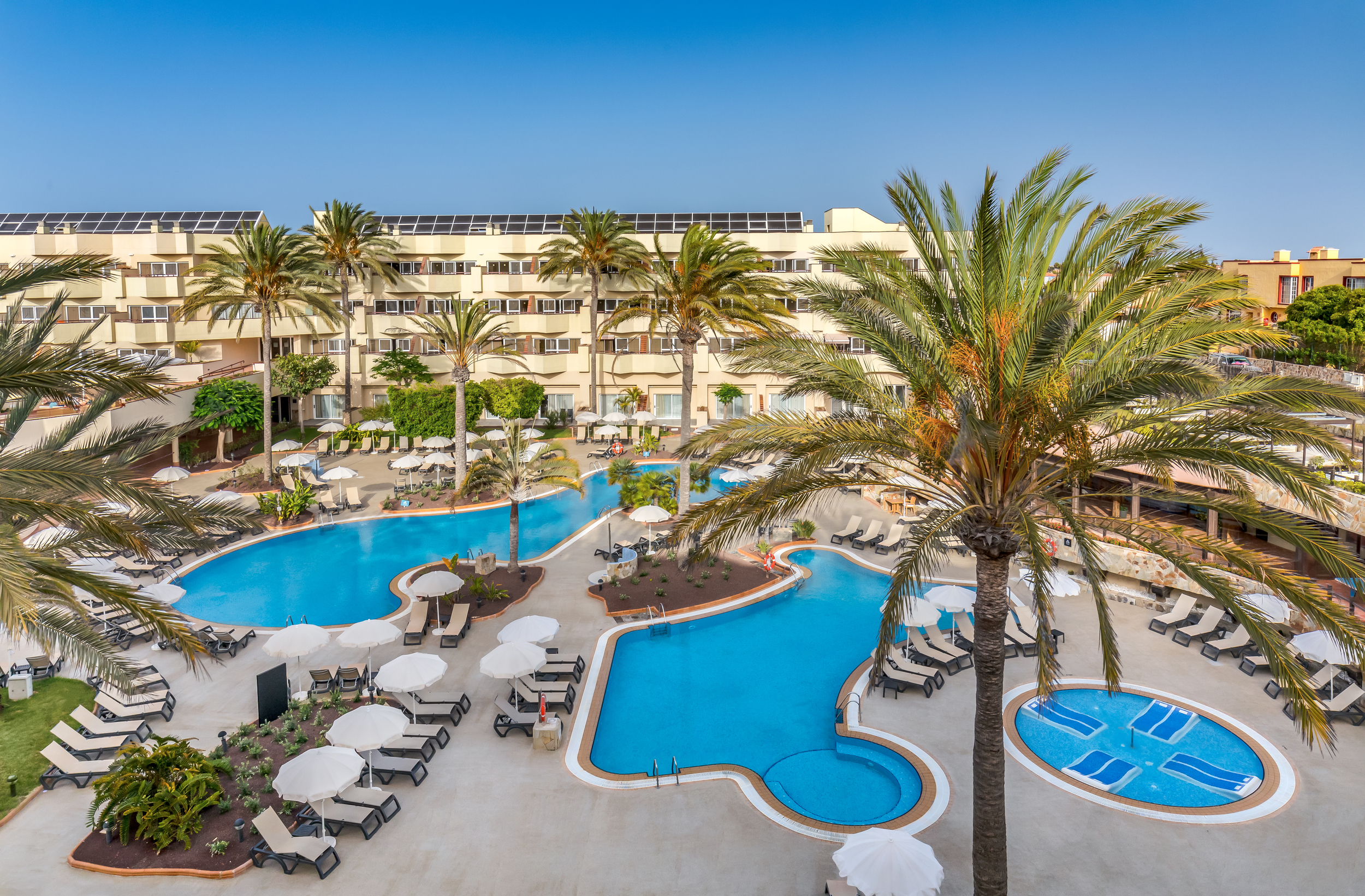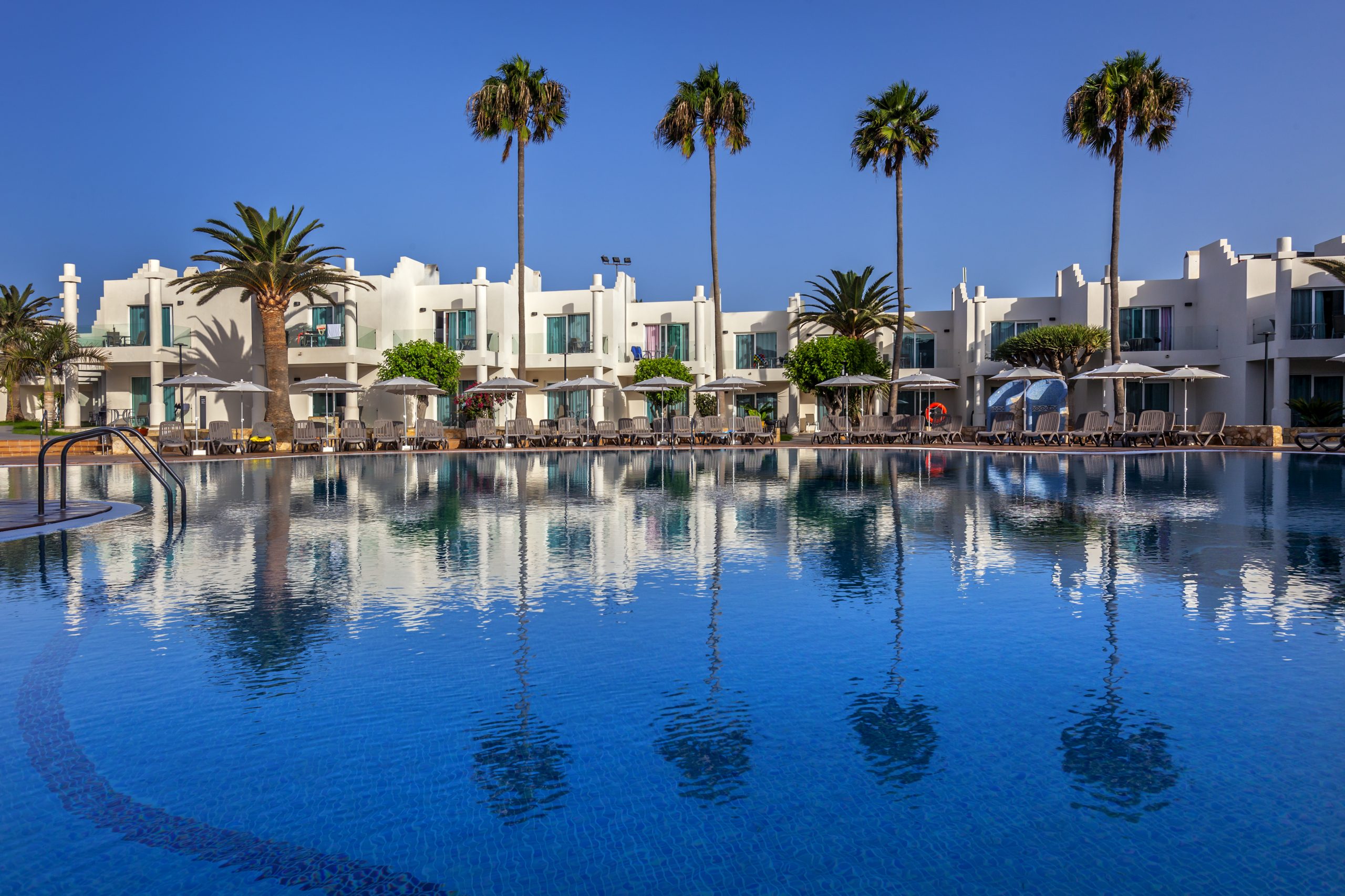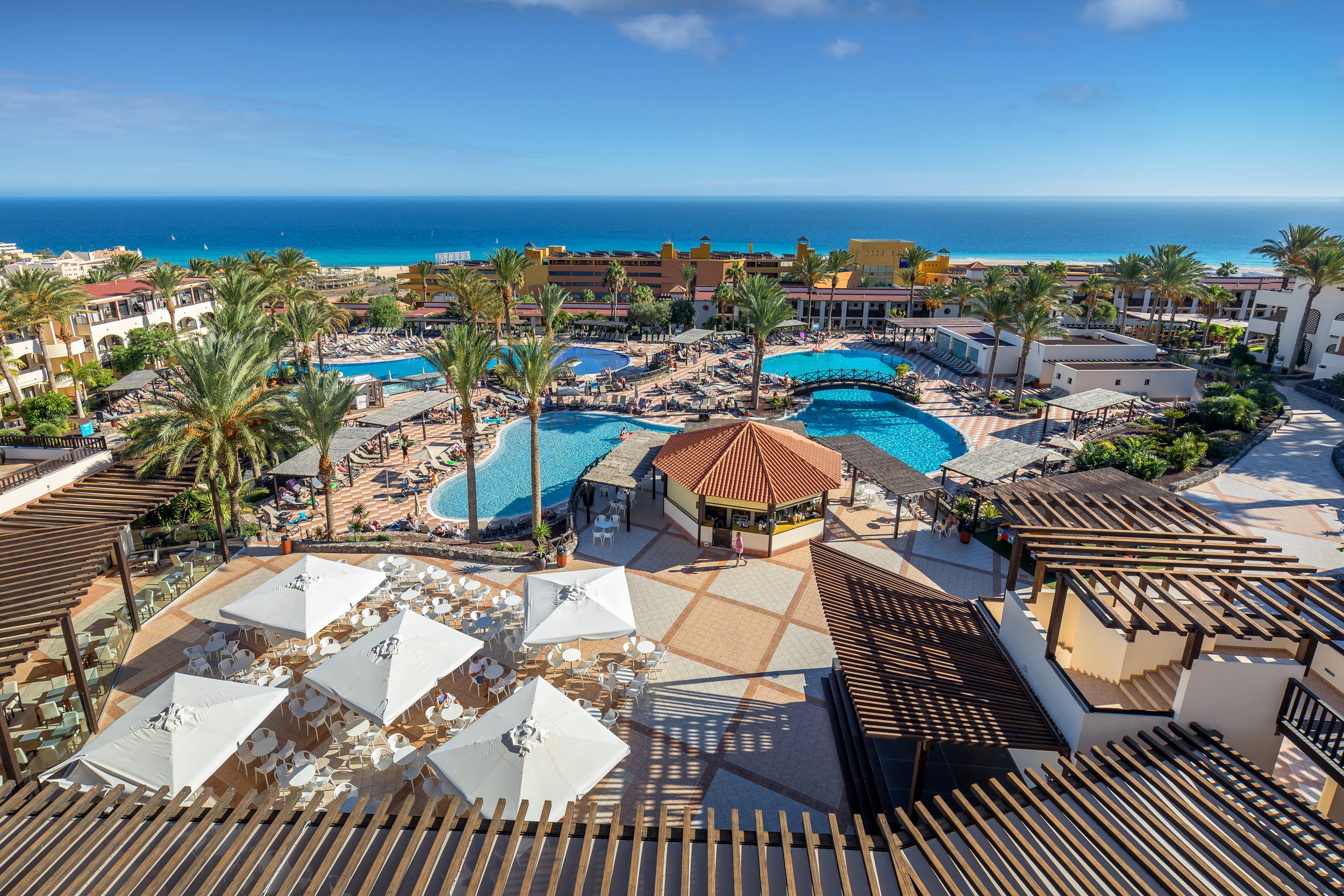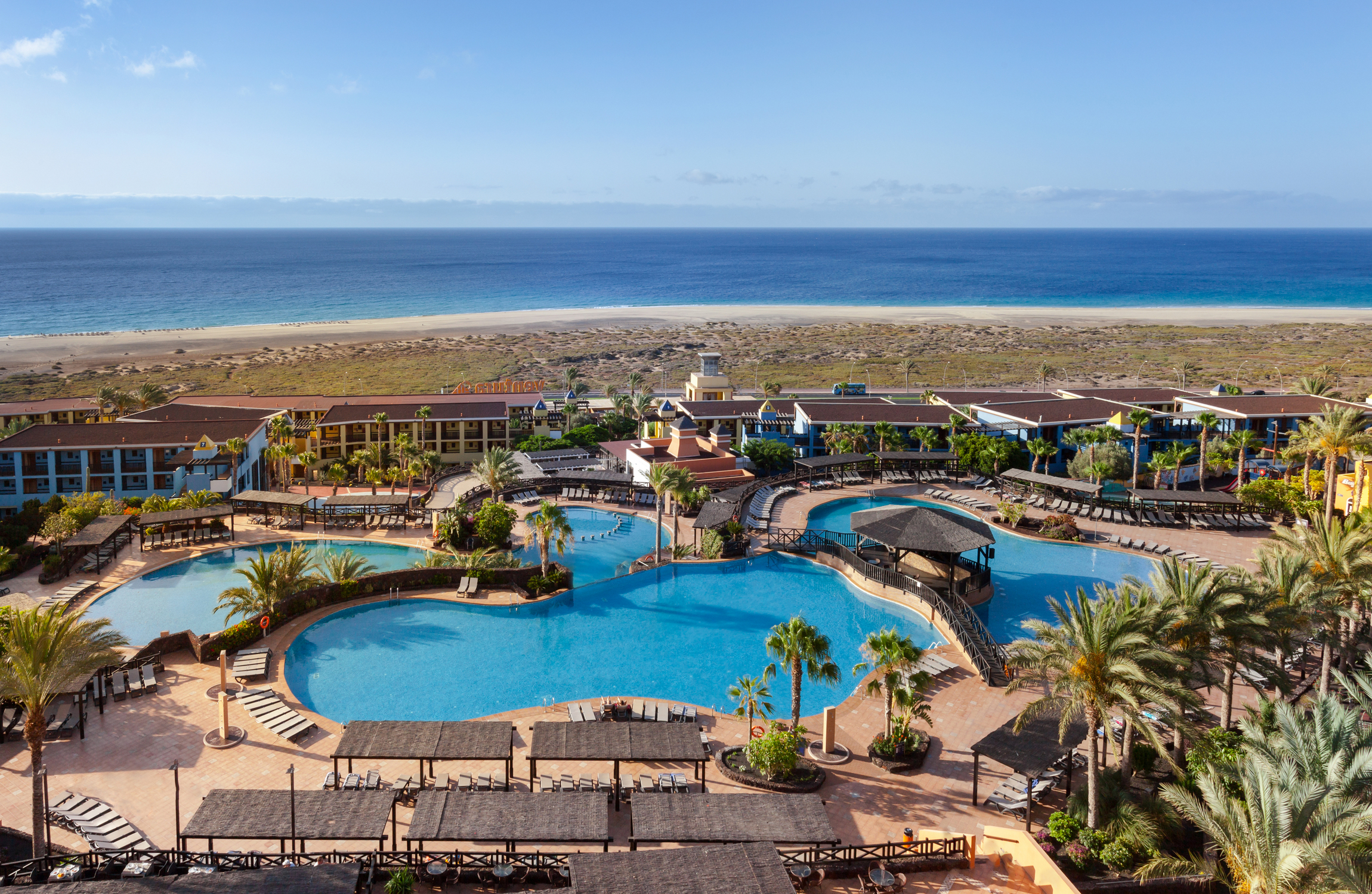What was once a humble fishing town has become, in recent decades, one of Fuerteventura’s main tourist destinations. Caleta de Fuste is surrounded by tourist resorts and offers a vast range of activities, restaurants and leisure opportunities for holidaymakers.
Many people are now unaware of the fact that, centuries ago, this town was the favoured gateway of pirates and corsairs who regularly terrorised the island’s inhabitants. It was the pirates’ arrival that led to the construction of the Castillo de Caleta de Fuste in the eighteenth century, also known as the Castillo de San Buenaventura. This building comprises a strong circular defensive tower which was conceived to defend the island from invasions, while sounding the alarm bell to the rest of Fuerteventura’s inhabitants.
By learning about the circumstances under which the castle was constructed, you will gain an insight into a historical period that has become ingrained into the character of Fuerteventura natives.
Where is the Castillo de Caleta de Fuste?
Besides the wide range of activities and services offered by a tourist resort such as Caleta de Fuste, perhaps its biggest attraction for visitors is the cove (“caleta”) that lends its name to the town. It is one of the few spots that are naturally protected from the savage waves that crash against the island’s coastline.
However, the small bay that now serves as one of the town’s main tourist attractions was previously, centuries ago, a condemnation for locals, as it was used by various pirates as a gateway to the island. The Castillo de San Buenaventura was built to protect the area, which is located at the northern tip of the bay, lying between the beach and the marina. Nowadays, the castle is surrounded by two winding swimming pools that belong to the Barceló Castillo Beach Resort hotel complex.
What is the castle like?
The Castillo de Caleta de Fuste is a circular two-storied tower built out of dark volcanic rock, highlighting its robustness. The castle has a dome which is supported by a thick central pillar. This fortification is accessed via a stone staircase, which simultaneously serves to support the castle’s drawbridge with iron chains.
According to the “El Castillo de Caleta de Fuste” neighbourhood association, this drawbridge is raised and lowered through the entrance door’s pivot holes, allowing access to be cut off and the tower to be isolated. The pivot holes are stones that support the vertical piece of wood, known as the door post, which is one of the two sides of the door frame to which the hinges are fixed.
History of the Castillo de Caleta de Fuste
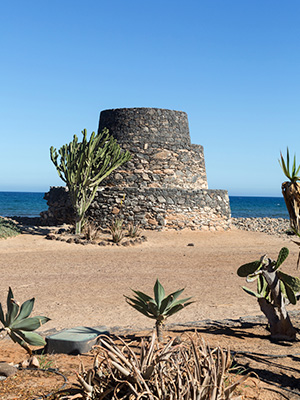
Throughout the history of the Canary Islands, since it became part of the Kingdom of Castile in the fifteenth century, invasions and attacks by Berber, French and English pirates were regular, with several clashes leading to particularly tragic results. However, by the early eighteenth century, Fuerteventura still didn’t have any fortifications that could be used to defend from these attacks. The towers designed by the Norman conquerors Jean de Béthencourt and Gadifer de La Salle in the early fifteenth century were destroyed centuries before, and it was becoming increasingly urgent to protect the terrified Fuerteventura population from pirate attacks.
The Castillo de Fuerteventura in the eighteenth century
In 1740, a dramatic incursion of English pirates on the Playa de Gran Tarajal wiped out the Tuineje population, with this tragic event ingrained in the collective memory of the island’s population. One year later, the General Commander of the Canary Islands, Andrés Bonito y Pignatelli, commissioned the Leonese military engineer Claudio de l’Isle with the construction of two practically identical defensive towers: the Torre de San Buenaventura in Caleta de Fuste and the Castillo de El Cotillo, also known as the Torre del Tostón, which stand on the northwestern coast of Fuerteventura. These castles were built in order to protect these two bays, which were of strategic importance for the island’s commercial traffic.
The construction of the Castillo de Fuste is estimated to have been finished in 1743. When it was first built, this castle had two small-calibre iron cannons with a garrison comprising a constable, a lieutenant and four soldiers, who were responsible for handling the short artillery of the two cannons. These military figures were known as the “custodians” of the castle. The island’s own “cabildo” (council) was responsible for providing and maintaining the personnel who protected the Torre de Caleta de Fuste and the Castillo de El Cotillo. They used the island’s own inhabitants to do this, which generated unrest amongst the population of Fuerteventura.
The Torre de San Buenaventura was thinner when it was first built, with walls measuring three metres thick. Following a pirate attack in which a cannon ball destroyed much of its “fragile” wall, the tower underwent reformations that saw it assume its current dimensions, with six-metre-thick walls. At the same time, the drawbridge was replaced by a fixed bridge.
Nineteenth century: popular uprising and imprisonment of the rebels
There are no historical records about military interventions undertaken from the castle against external threats. However, the construction was eventually used against the island’s own population. In 1829 there was a popular uprising in which around 500 peasants from northern Fuerteventura demanded the public use of Huriame pastures. These protests were resoundingly quashed by the island’s military authority.
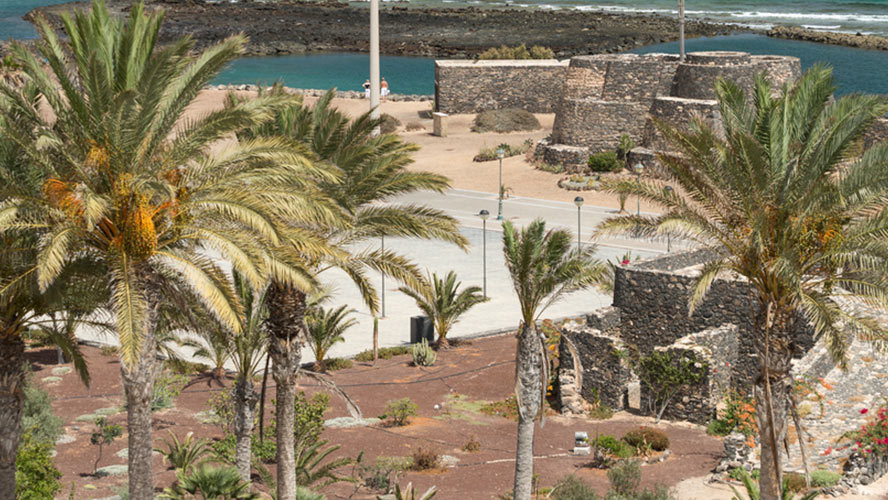
In total, 30 of the uprising’s leading figures were imprisoned in the Castillo de Caleta de Fuste. They were eventually transferred to the Torre del Tostón, which was better equipped to hold the prisoners.
The castle became private property during the nineteenth century, although in 1871 a decision was made for this tower and the Castillo de El Cotillo to be handed over to the tax authorities.
Twentieth century: Spanish Civil War and the tourism ‘boom’
During the short period of the Spanish Civil War (1936–1939), the Castillo de Fuste once again assumed a defensive purpose. In 1949, both the Castillo de San Buenaventura and the Torre del Tostón were declared Assets of Cultural Interest.
In the early 1980s, following the development of the tourist industry on the island, the resort’s two swimming pools were built around the castle.
The present and future of one of Fuerteventura’s historic landmarks
It wasn’t until 2013 when the island’s ‘Cabildo’ and the Antigua Town Hall (the administration responsible for Caleta de Fuste) initiated the restoration works that led to the tower’s current appearance.
While the tower is currently closed to the public, it is expected to open its doors to locals and tourists alike in the future. It is expected to hold a historical-ethnographic exhibition room.
At the northern entrance to Caleta de Fuste via the FV-2 motorway, there is a small-scale replica of the Castillo de Caleta de Fuste in the middle of a roundabout. This is an interesting homage to Caleta de Fuste’s “most iconic neighbour”.




































































